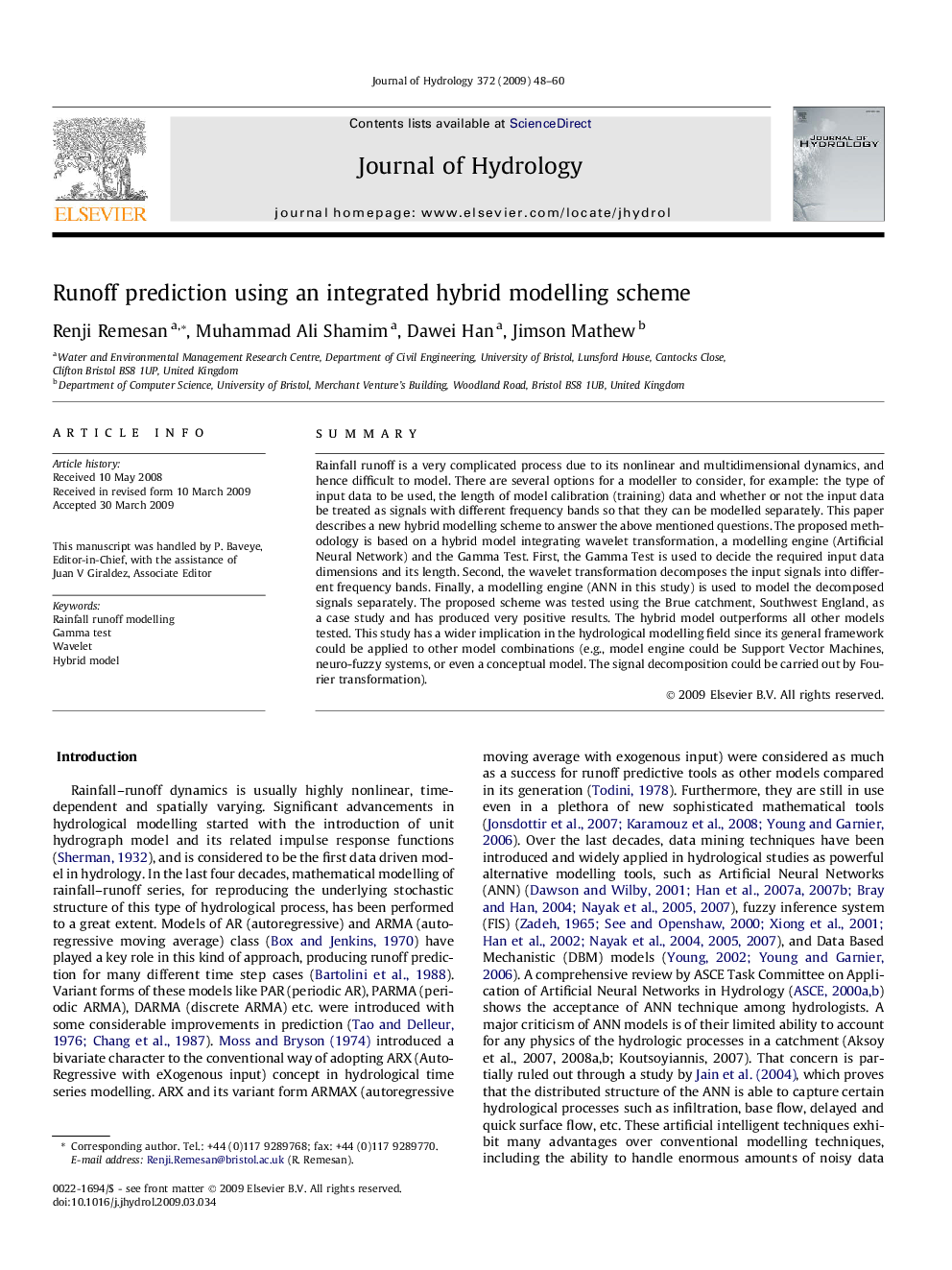| Article ID | Journal | Published Year | Pages | File Type |
|---|---|---|---|---|
| 4578587 | Journal of Hydrology | 2009 | 13 Pages |
SummaryRainfall runoff is a very complicated process due to its nonlinear and multidimensional dynamics, and hence difficult to model. There are several options for a modeller to consider, for example: the type of input data to be used, the length of model calibration (training) data and whether or not the input data be treated as signals with different frequency bands so that they can be modelled separately. This paper describes a new hybrid modelling scheme to answer the above mentioned questions. The proposed methodology is based on a hybrid model integrating wavelet transformation, a modelling engine (Artificial Neural Network) and the Gamma Test. First, the Gamma Test is used to decide the required input data dimensions and its length. Second, the wavelet transformation decomposes the input signals into different frequency bands. Finally, a modelling engine (ANN in this study) is used to model the decomposed signals separately. The proposed scheme was tested using the Brue catchment, Southwest England, as a case study and has produced very positive results. The hybrid model outperforms all other models tested. This study has a wider implication in the hydrological modelling field since its general framework could be applied to other model combinations (e.g., model engine could be Support Vector Machines, neuro-fuzzy systems, or even a conceptual model. The signal decomposition could be carried out by Fourier transformation).
